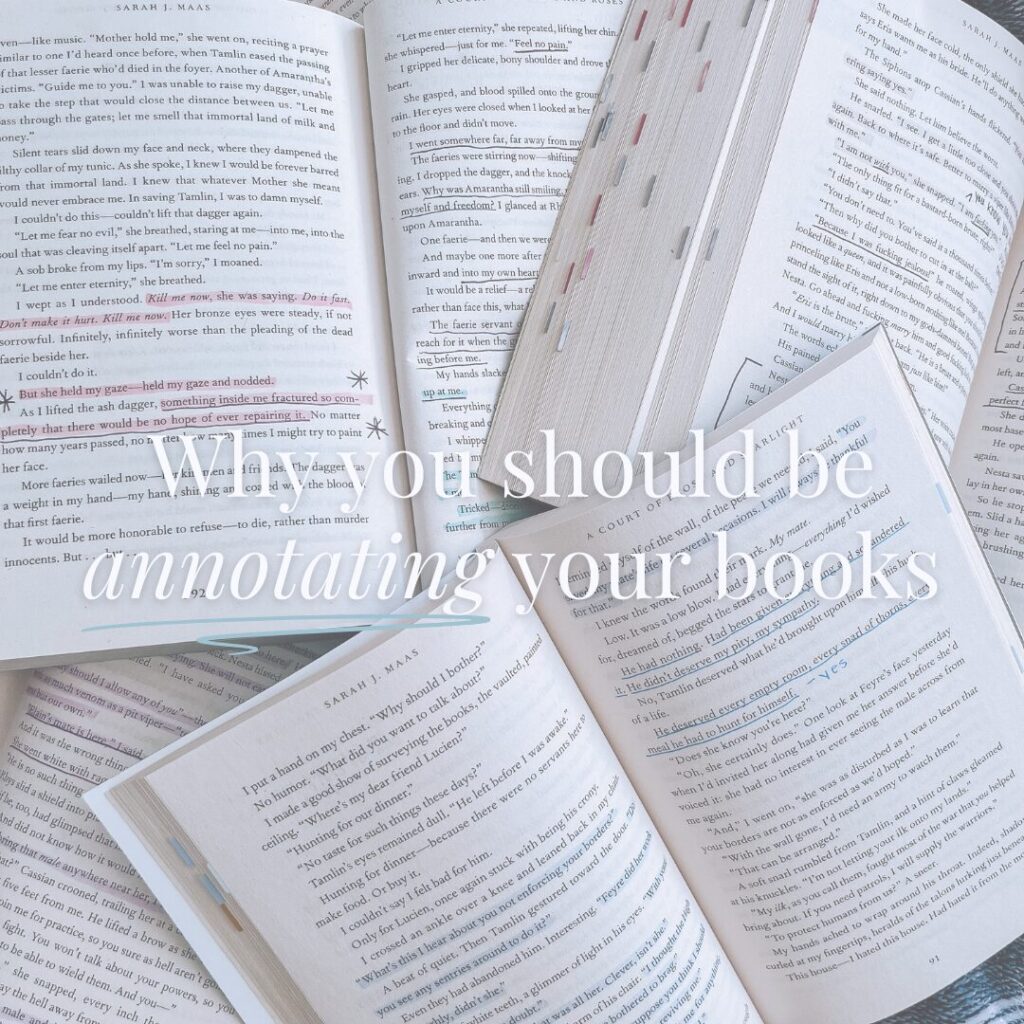You’ve probably heard that annotating is just something students do to survive exams, but honestly? It’s one of the best things I’ve ever done to make reading more fun, meaningful, and memorable. Whether you\’re scribbling thoughts in the margins, underlining a quote that hit you right in the heart, or color-coding themes with sticky tabs, annotating can completely change the way you connect with a book.
So if you’ve ever wondered what all the hype is about or how to even start, I’ve got you covered. Let’s talk about why annotating is worth it, and how to create a simple system that feels like you.
Why Bother Annotating?
It keeps you hooked.
Marking up your book pulls you into the story in a way that feels active, like you\’re chatting with the author or sharing secrets with the characters. You’re not just reading — you’re participating.
It helps you remember the good stuff.
Plot twists, emotional turning points, quotes that gave you chills — when you note them down, they stick with you. It also makes flipping back through a book later feel like revisiting old friends.
It becomes your reading diary.
One of my favorite things is looking back at my notes in a book I read a year ago and seeing how much I’ve grown or how my perspective has changed. It’s like time-traveling through your own thoughts.
So, How Do You Annotate?
Honestly, there’s no right or wrong way. It can be super artsy or totally minimal. Do what makes sense for your brain and your style. Here’s a beginner-friendly system I’ve used (and loved):
1. Sticky Tabs = Your Best Friend
Color-coding can help you find things at a glance. Try this:
- Yellow for major plot twists or big moments
- Pink for character development or juicy dialogue
- Blue for quotes you adore
- Green for themes, symbolism, or foreshadowing
- Purple for your own thoughts, reactions, or anything that made you laugh out loud
Stick them on the edges of the pages so they peek out, making it easy to revisit those moments anytime.
2. Highlighters for the Win
Pick one color or go full rainbow mode. A few ideas:
- Yellow for facts or pivotal ideas
- Pink for beautiful writing
- Blue for anything confusing or thought-provoking
(Hot tip: try gel highlighters — no bleed-through, and they glide like butter.)
3. Pen or Pencil = Your Voice
Write in the margins like you’re having a conversation with the book.
- Underline lines that made your chest ache or your brain spark
- Add arrows to connect ideas or moments across the story
- Use little symbols — hearts for quotes you love, stars for key plot points, question marks for stuff you want to unpack later
Quick Tips to Make Annotating Work for You
- Don’t overthink it. Start small. You don’t need to annotate every single page. This isn’t homework.
- Match your vibe. Try using different color themes for different genres. Maybe fantasy gets emeralds and golds, while romance leans into blush and rose tones.
- Look back often. When you finish the book, take a few minutes to flip through your notes. It’s like a mini highlight reel of your emotional journey.
Ready to Dive In?
If you’ve never tried annotating, you might be surprised at how much deeper you fall in love with your books. It turns reading into something a little more personal — and a lot more fun.
Want to know what sticky tabs I use and swear by? Check out the link below to see my go-to annotating tools!
